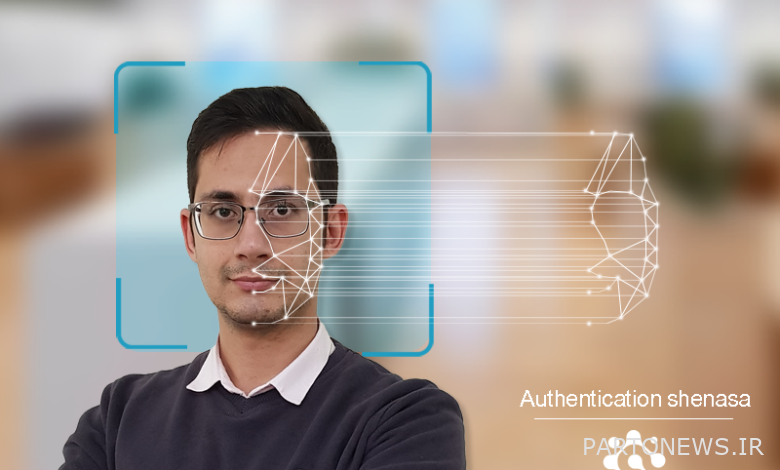Atena, a smart solution for online authentication

In today’s age, to join a site or social network, open a bank account and make financial transactions or invest in the stock market and be active in e-commerce, we need to prove our personal identity. The process that checks and confirms the authenticity of the user or customer is called authentication.
Today, a large number of companies offer their services on the Internet. This causes an increase in damages such as financial crimes and money laundering, unauthorized access to people’s user accounts, changing or manipulating information, and other small and large vandalism. Therefore, verifying the online identity of people has become a necessity.
Types of authentication
Authentication is divided into three levels depending on the application and importance of the data.
1. What you know:
We use username and password to enter the site or social networks. This type of authentication is the simplest, most widely used and, of course, the weakest way to check the identity of people. Because if the password is simple, writing it down on paper, or guessing it by a hacker, allows unauthorized access.
2. What you have:
Another way to check people’s identity is to carry a physical device with which it is possible to enter or use the desired services. For example, you can open a door or enter a building with a physical card. Or you can turn it on with the car key. Of course, this method is not safe on its own, and if it is stolen, it will be possible to break into the system or a specific place.
One of the solutions that helps to make the systems more secure is the combination of the above two methods. For example, to withdraw money from ATMs, it is necessary to carry a bank card (something you have) and a password (something you know). Or to enter social networks and some sites, you enter the password (something you know) and the code sent to your mobile phone (something you have).
Of course, these methods cannot be relied on alone. Because by stealing a physical device (such as a bank card) or short-term access to a mobile phone to access SMS messages and having a password (something you know), you can enter the system and access the desired information.
3. What you are!
The third factor of checking people’s identity is authentication based on your physical characteristics. As you know, every human has physical characteristics that distinguish him from other humans. These features include fingerprints, face, iris, walking style and tone of voice.
These features are unique in all people and it is difficult to fake them. But this type of authentication is possible when the user is physically present. For example, when you want to open a door, you do it by putting your eyes in front of the camera, or when you want to get services from the police plus 10, you register your fingerprint on the device.
But what should be done to authenticate online and of course offline?
Athena systema solution based on artificial intelligence, for authenticating people offline
Due to the growing need to access offline services, such as opening a bank account, applying for a bank loan, buying and selling shares in the stock market, buying cars, insurance services, participating in online classes, buying and selling foreign and digital currencies, we need to confirm the identity of people. . Therefore, the knowledge-based company Datapoyan Alma has designed and implemented a system named Athena with the aim of playing a role in the development of artificial intelligence infrastructure and online authentication.
Athena architecture examines the accessibility of people in different layers by using new methods and of course a combination of the above three methods. For this and in order to increase the security of identity recognition, the user’s national code is first received (what he knows). Then by invoking Shahkar’s web services (the services related to the regulatory organization and radio communication), an SMS is sent to the person’s mobile phone (what have you). Then the user is asked to take a selfie with his mobile camera. Here, the user is asked for different facial expressions, including looking left and right, or moving the camera back and forth. Then, with artificial intelligence algorithms, the images collected from the person’s mobile camera are matched with the national card image (called from the civil registration services). In this section, the liveness of the image is also measured with other artificial intelligence methods so that the user has not sent another person’s image instead.
This method is one of the safest, least expensive and most accurate possible methods of verifying people’s online identity.
Another benefit of using the service Athena (authena.ir) The following can be mentioned:
- Saving time and money: with the help of automating authentication processing steps, operational costs of employees, hardware, office costs and travel are reduced.
- With the possibility of providing standard services (api) to small and large organizations and businesses, Athena is a strong arm in the field of user authentication.
- Online recognition allows businesses to provide a seamless experience to their customers. End users can do the work in minutes instead of physically being in the centers and waiting in long queues.
- Customer-centric approach: providing different options for verifying the identity of people represents customer-centricity, value of user’s time and customer-orientedness.
- Adhering to all security instructions and protecting the privacy of users is and will be Athena’s first priority.
This system, which was developed by relying on indigenous knowledge, emphasizes on high security of information and accurate identification of people. Therefore, in order to ensure complete security and prevent abuse by profit-seekers, methods based on the needs of each business have been provided to prevent forgery or unauthorized access.
Among other things, it is possible to mention the recording of a selfie video from the user and the random reading of a text by him. In this method, a predetermined text (by the system) is displayed to the user and he is asked to read the text aloud. After uploading, the video is checked by artificial intelligence algorithms and the read text is matched with the original text and the face image in the video is matched with the national card image. If one of the cases is not valid, the validation will fail. Or, if necessary, it asks the user to perform some hand movements (gesture), such as liking, showing the number two, five, fisted hand, etc. The correctness of these movements is done by the system and intelligently.
All the above steps and authentication reports are available in management dashboards for system administrators.
The design of this system has been done with the round-the-clock efforts of Iranian experts and with the efforts of the artificial intelligence group, so as to provide competent services to Iranian citizens. This team plans to develop electronic banking services in the next steps.
How do you rate this article?

